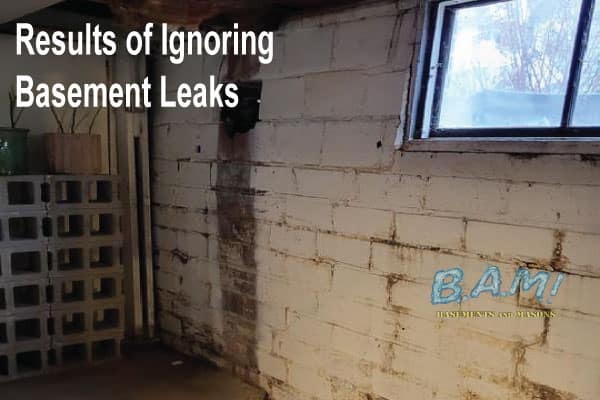Best Basement Waterproofing Fundamentals Explained
Best Basement Waterproofing Fundamentals Explained
Blog Article
Rumored Buzz on Best Basement Waterproofing
Table of ContentsSome Ideas on Best Basement Waterproofing You Need To KnowBest Basement Waterproofing - An OverviewThe Of Best Basement WaterproofingMore About Best Basement WaterproofingThe Best Strategy To Use For Best Basement Waterproofing
usages excavation methods towards all-time low of the structure's structure. involves eliminating dampness after it has gotten in the cellar. AdvantaClean's qualified experts and professionals will certainly locate the water source. If wall or piece splits are present, we will certainly infuse polyurethane and epoxies right into the cracks and secure the concession, preventing additional dampness from entering.
If there's condensation outside of the foil, you have high moisture in your cellar. Fix it with a mobile area dehumidifier or a whole-house humidifier system rather than waterproofing products. If the aluminum foil has condensation on the within surface (beside the wall surface), the soil around your house may be normally damp from a high water table or poor dirt water drainage.
You can waterproof just your indoor walls, which may fix the problem. Once they dry, they adhere completely to concrete and masonry walls.
Some Known Incorrect Statements About Best Basement Waterproofing
Concrete water resistant layers can't be applied to formerly repainted surface areas; examine the tag. Recognized as densifiers, they are suitable only for walls that haven't been painted or sealed.
You comb, roll, or spray it on a lot more heavily one gallon covers just 75 square feet, not the 300 square feet typical with standard paint. Water-proof paint is great for do it yourself application. You can use it over painted surface areas, and paint over it once it's treated (one gallon expenses $37).
It can cost $10,000 to $15,000, depending upon the work needed. Outside waterproofing includes digging deep into throughout your home to the full depth of the structure wall surfaces, then installing a water resistant covering or membrane covered by drain panels. The panels supply an easy course for water to flow down to an outside French drain at the bottom of your foundation.
We have actually all been captured in a storm without umbrella or raincoat (Best Basement Waterproofing). And it's constantly a dish for disaster: whatever's damp, your coiffure is wrecked, and points are getting moldy. A basement without waterproofing is type of like that. Minus the ruined coiffure component. Your basement does not want to experience a rainstorm without proper security equally as much as you do not desire to.
Excitement About Best Basement Waterproofing
If you've done your research study, you 'd understand there are two types of waterproofing: interior and outside. It can get puzzling what they both mean, which one's a far better financial investment, and what will in fact keep the water out. Don't worry, we created this blog to quickly define both techniques for you and talk about the pros and cons of each.
Exterior waterproofing is a waterproofing technique that involves securing your home from the outside. It's type of like a moat around a castle. It entails excavating a trench around your whole home to the structure (concerning 8 to 10 feet down). The structure wall surfaces are after that cleaned up, sealed, and covered with a water resistant membrane or sealant.
The 8-Minute Rule for Best Basement Waterproofing
It's a more engaged procedure that requires excavating up your backyard, which is expensive and lengthy. Outside waterproofing includes eliminating whatever surrounding the home, click resources including verandas, driveways, sidewalks, landscaping, air conditioning devices, decks, and so on. If any one of the job was done incorrectly and water is still entering your cellar, there isn't much you can do to deal with or fix it.
Interior cellar waterproofing involves waterproofing from the inside. Any type of water that leaks into your cellar is redirected prior to it touches your flooring.
It's a reliable method to water-proof your cellar - Best Basement Waterproofing. The downside of indoor basement waterproofing mainly has to do with the installment process. This technique needs saved items, furnishings, and integrated shelving or cabinets to be moved from touching the cellar walls. And during installation, click reference your basement can not be used. The largest distinction in between both techniques is this: Outside waterproofing is a preventative remedy and indoor waterproofing is a corrective option.
The 7-Minute Rule for Best Basement Waterproofing
To conclude, outside and interior basement waterproofing are both reliable techniques of securing your home from water damages. Outside waterproofing develops a barrier that avoids water from entering your home, while interior waterproofing redirects water read this that does enter your home. And it is very important to note that exterior waterproofing is a pricey and turbulent installation procedure when compared to indoor waterproofing.
Whichever method you choose, make certain you choose a reliable and reliable service provider for the task. If you have any kind of concerns concerning cellar waterproofing, please reach out to us.
You can load out our form below, start a conversation in the bottom right-hand edge, or call us at 1-800-827-0702.
Report this page